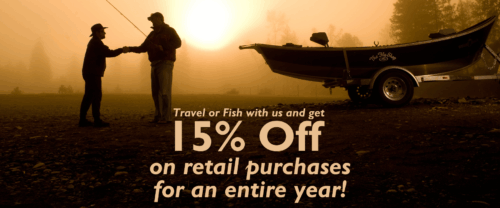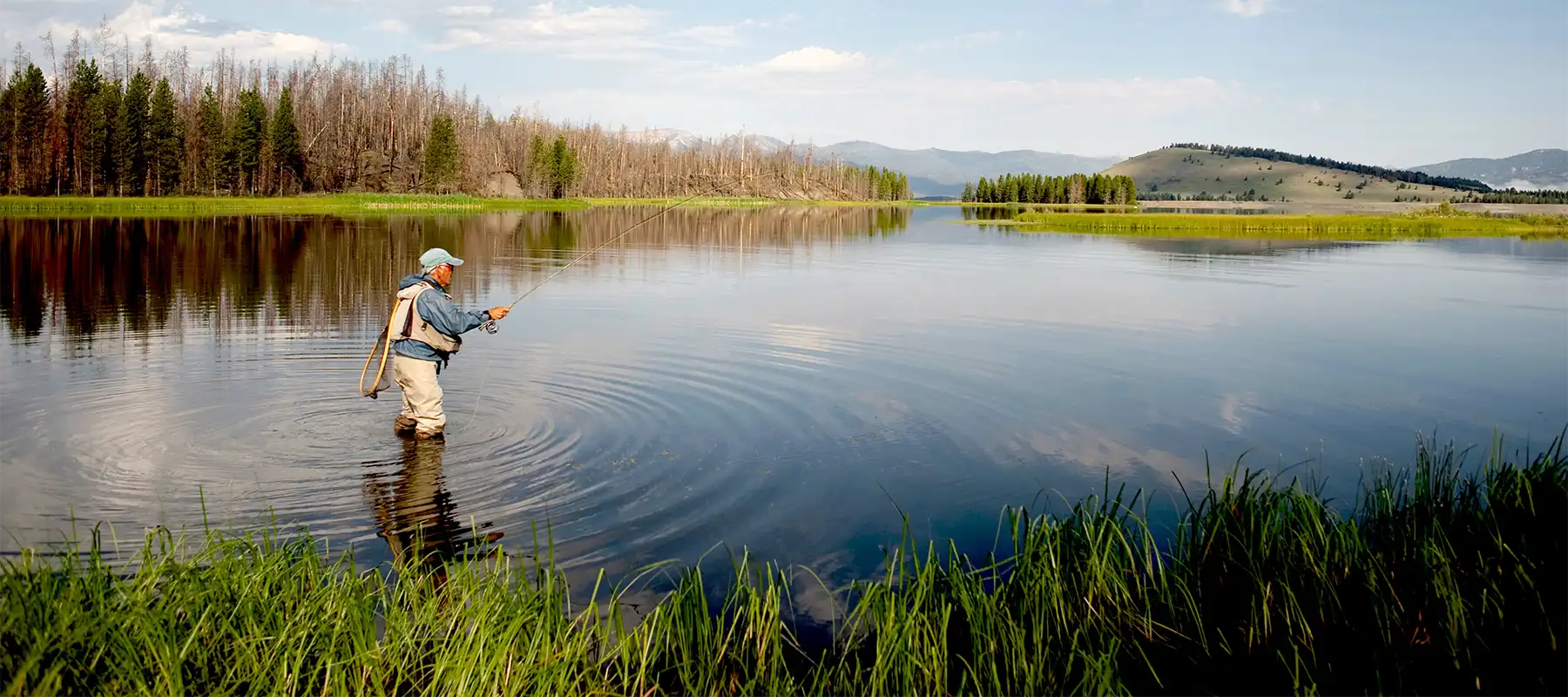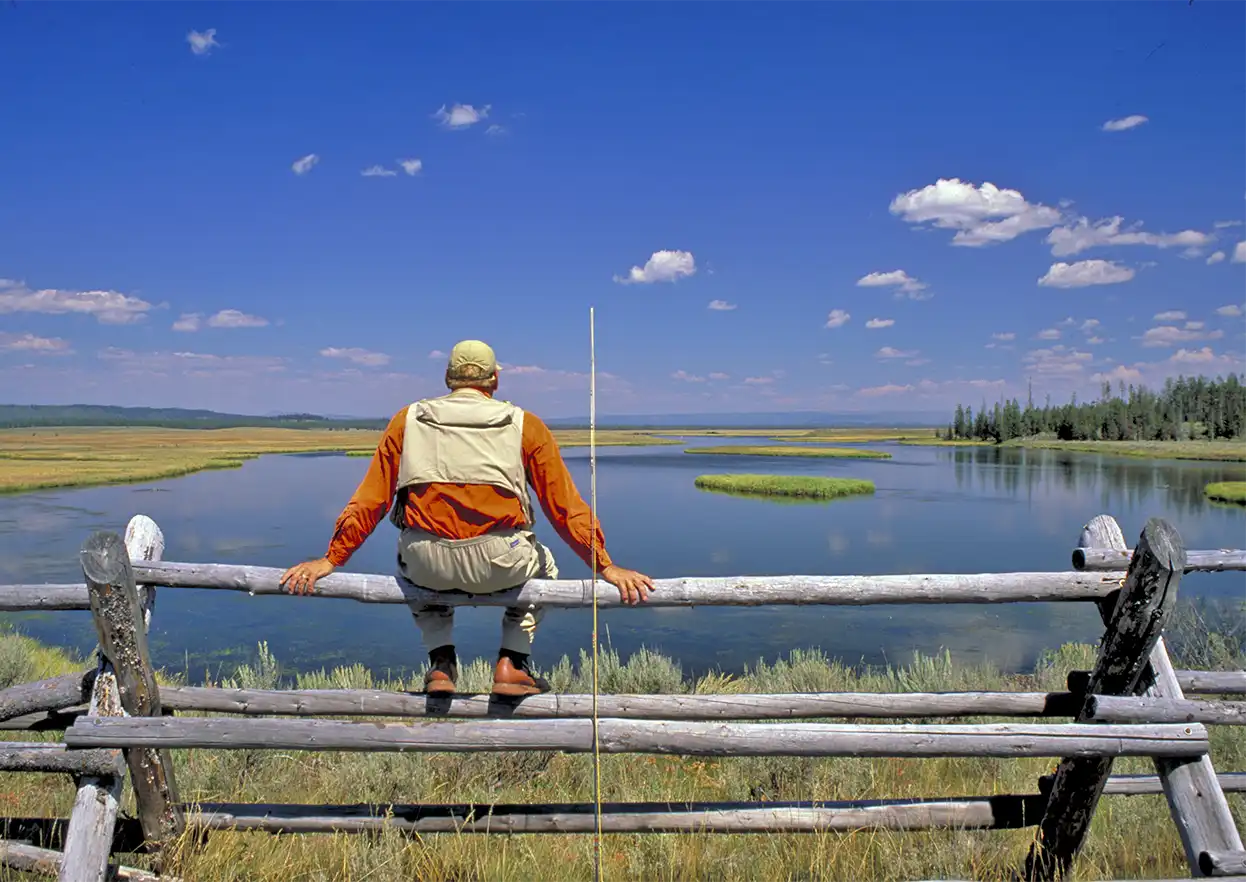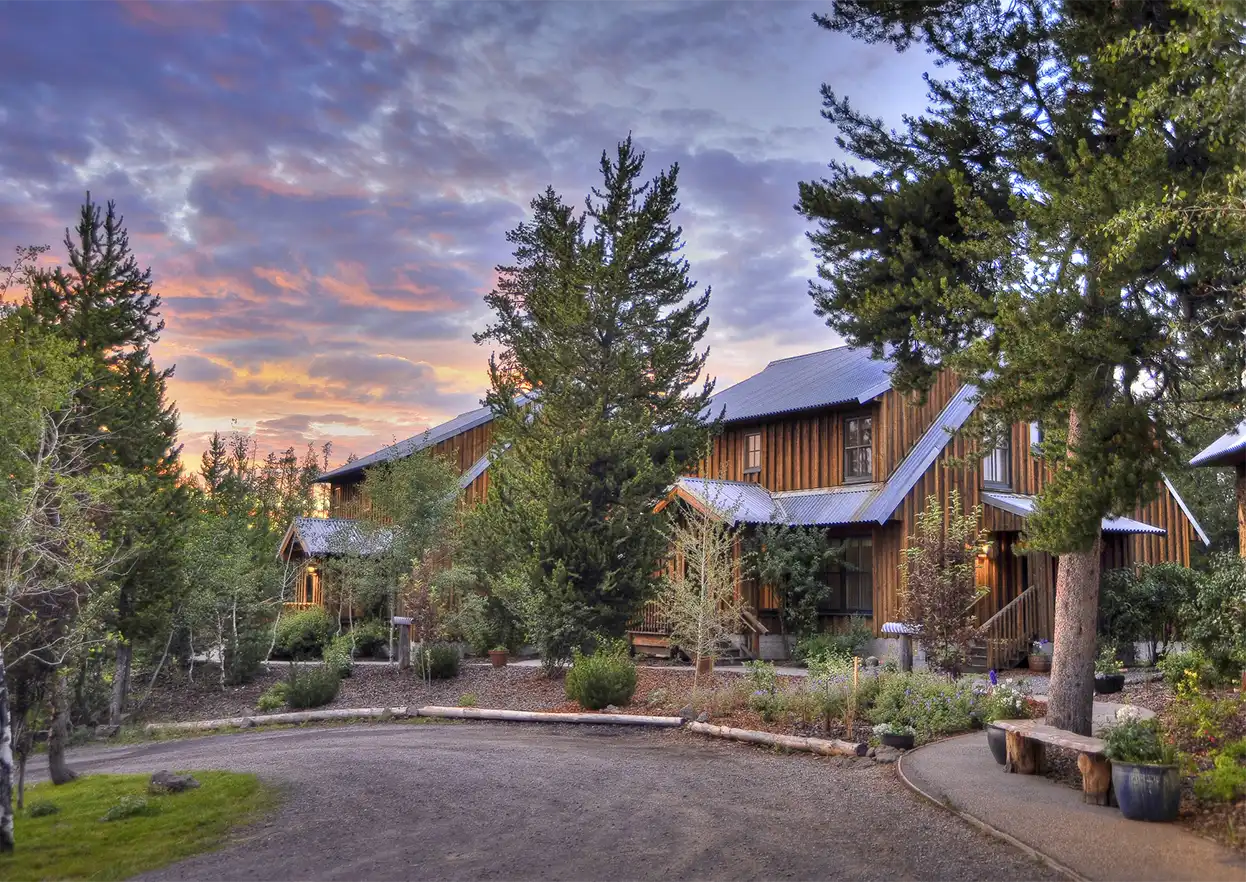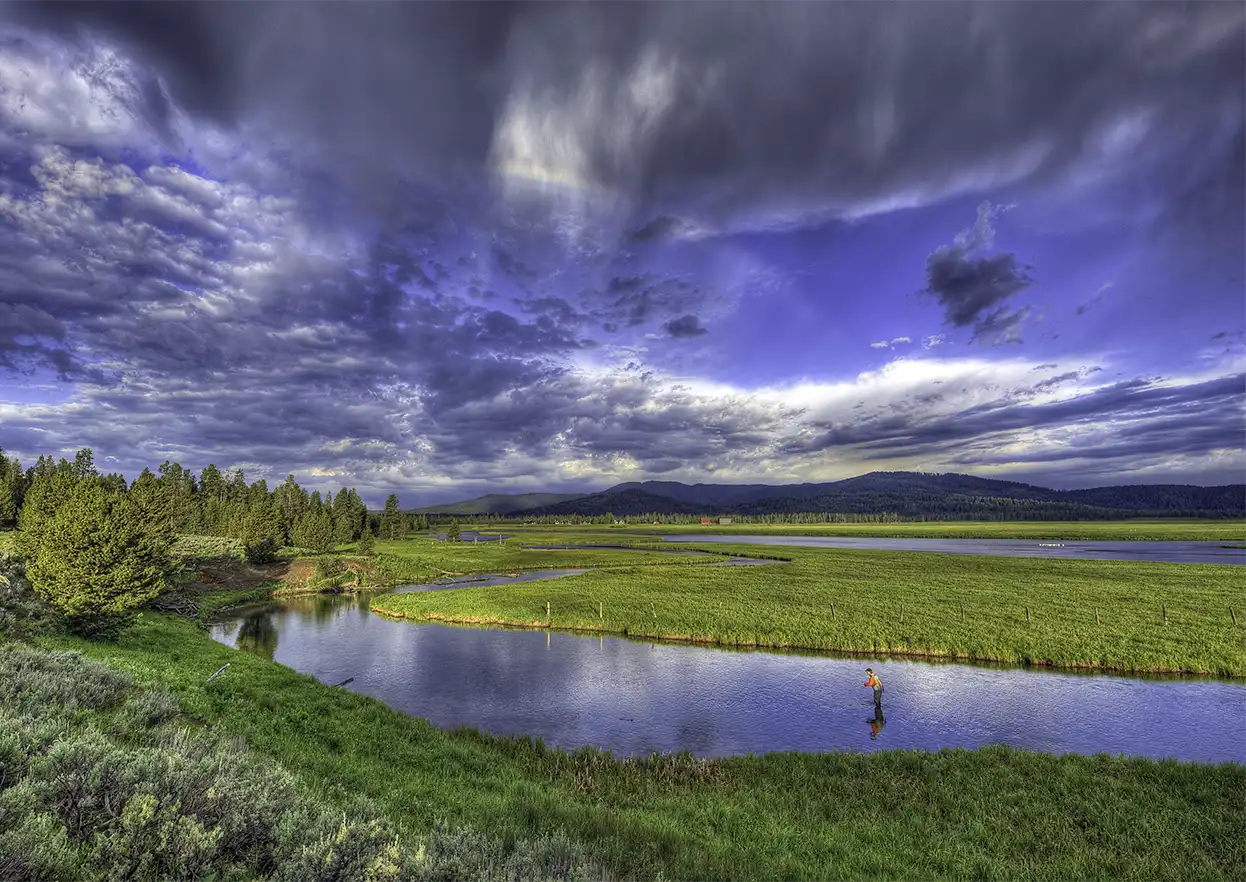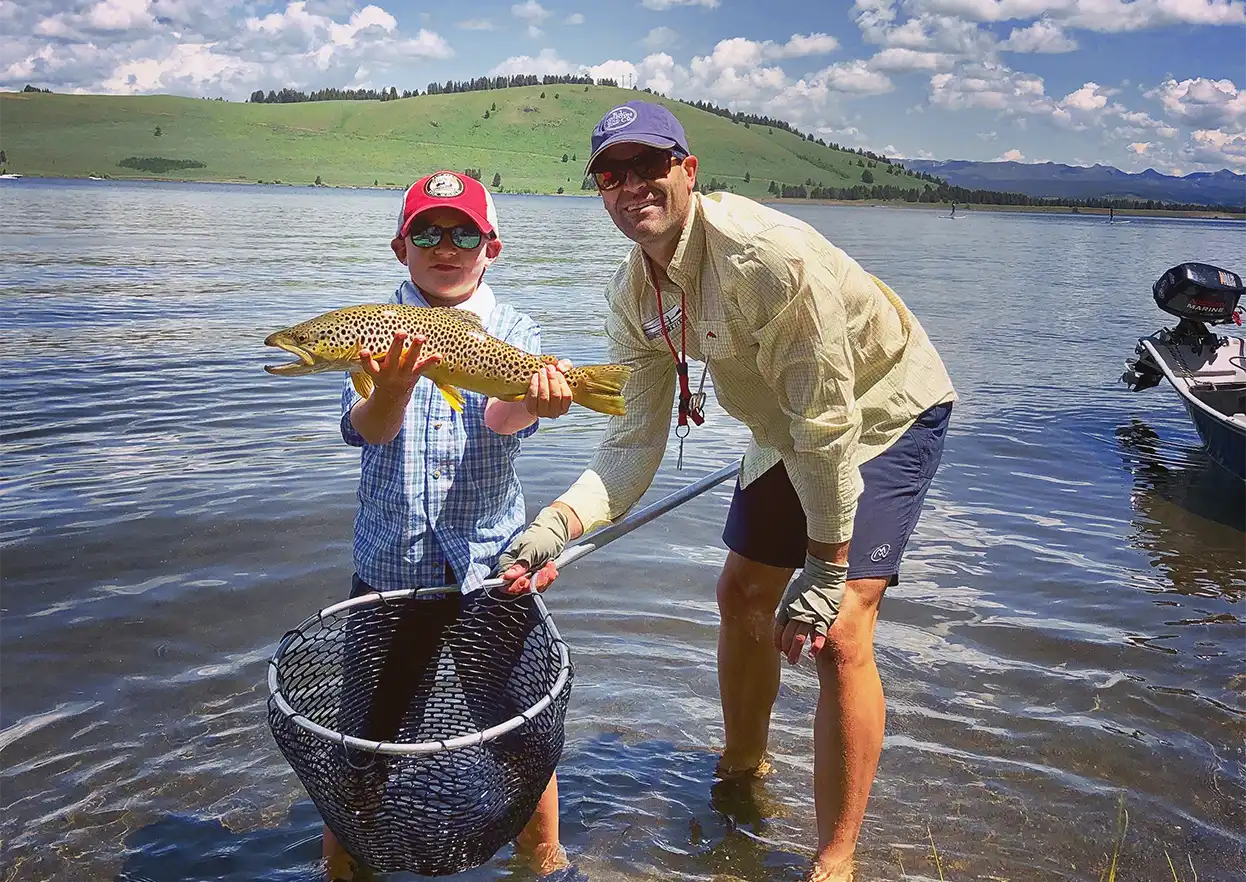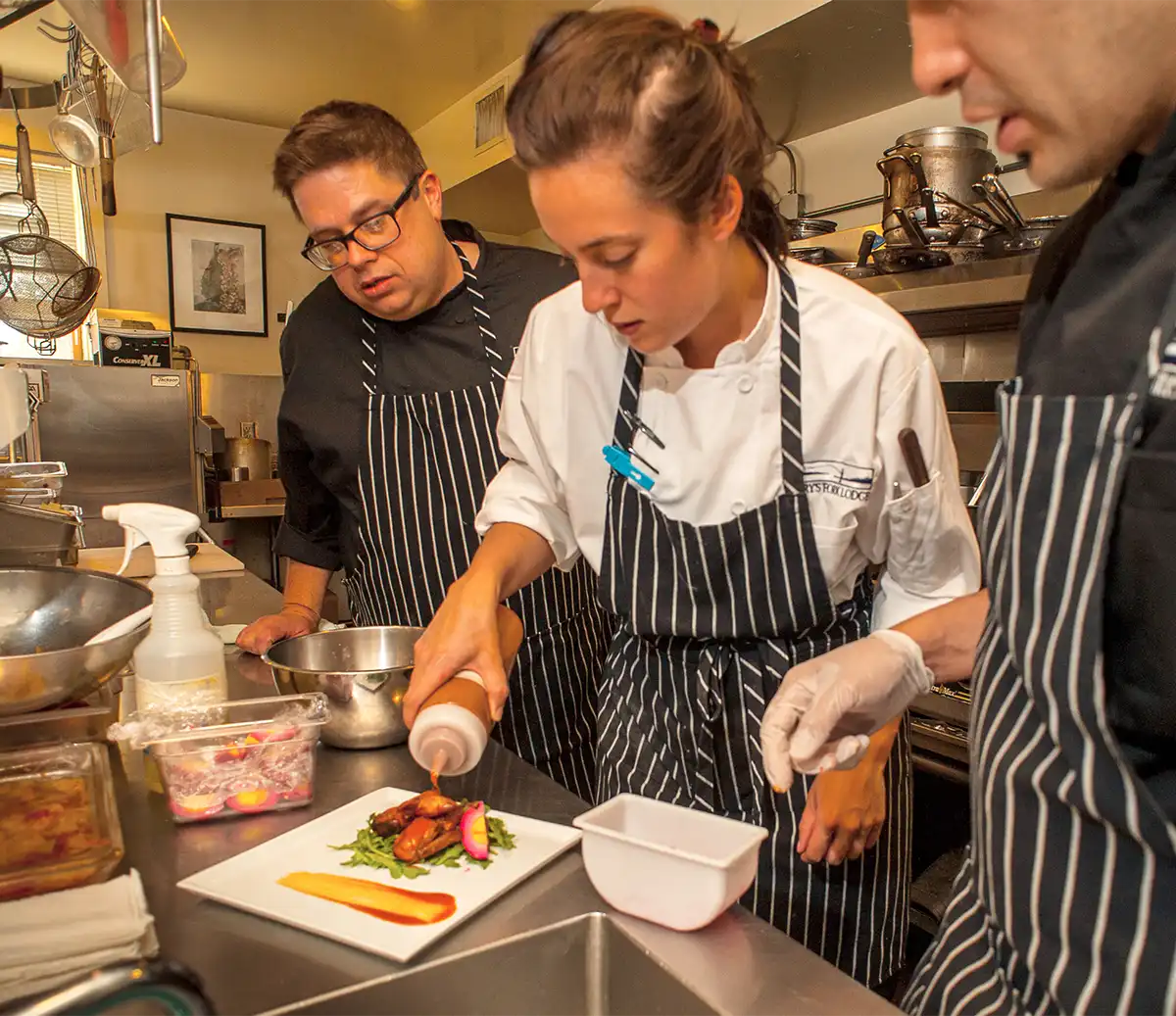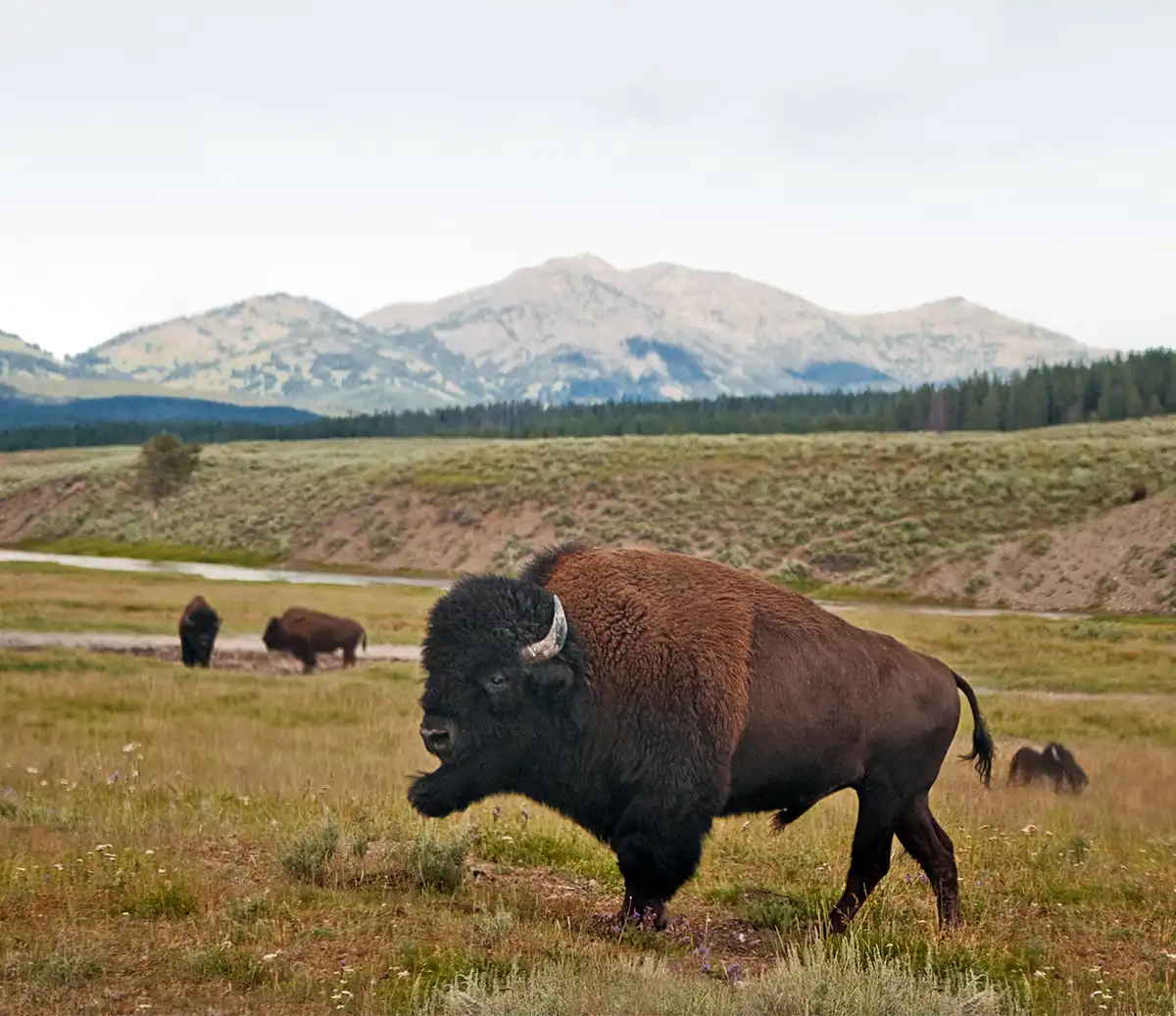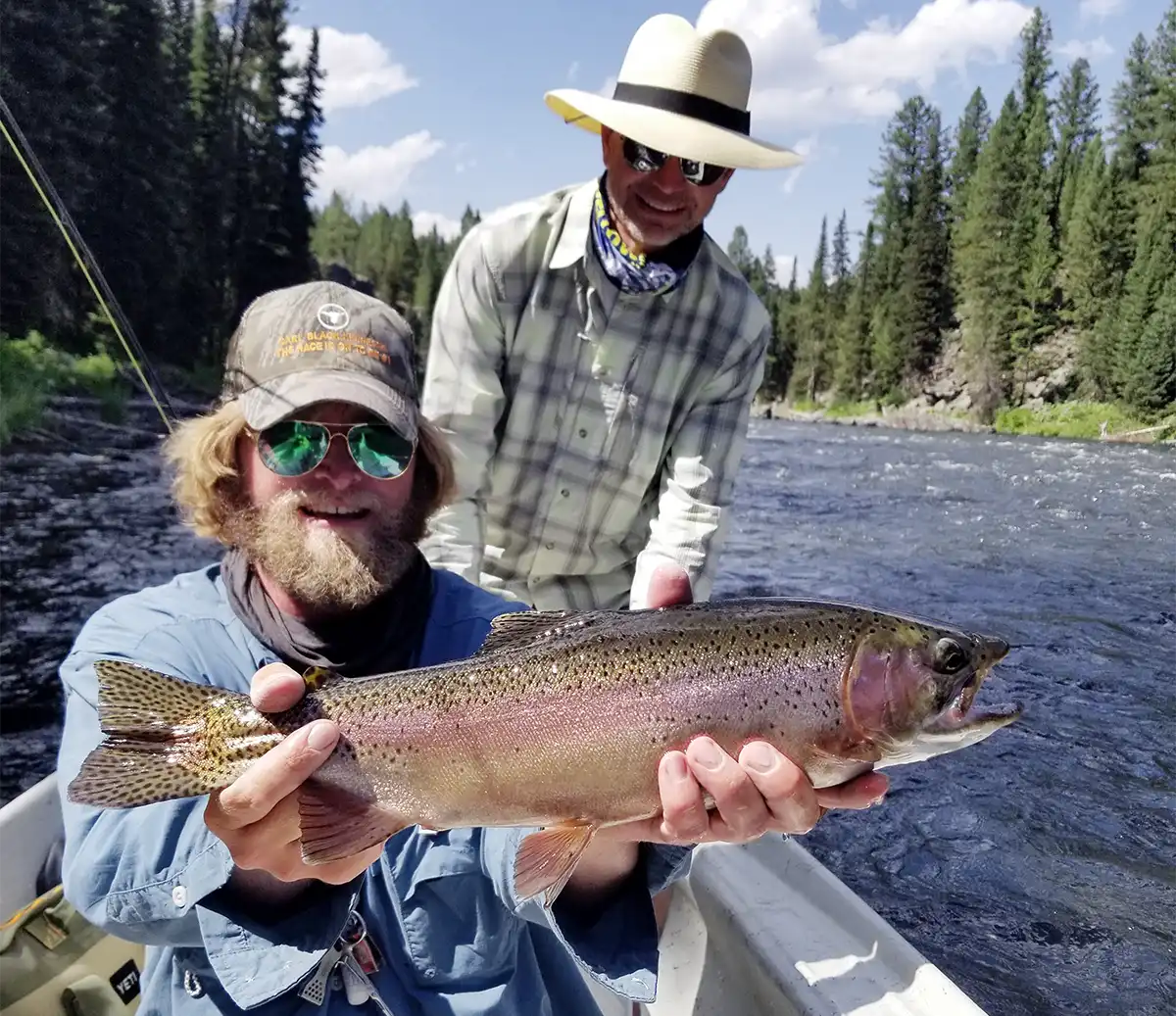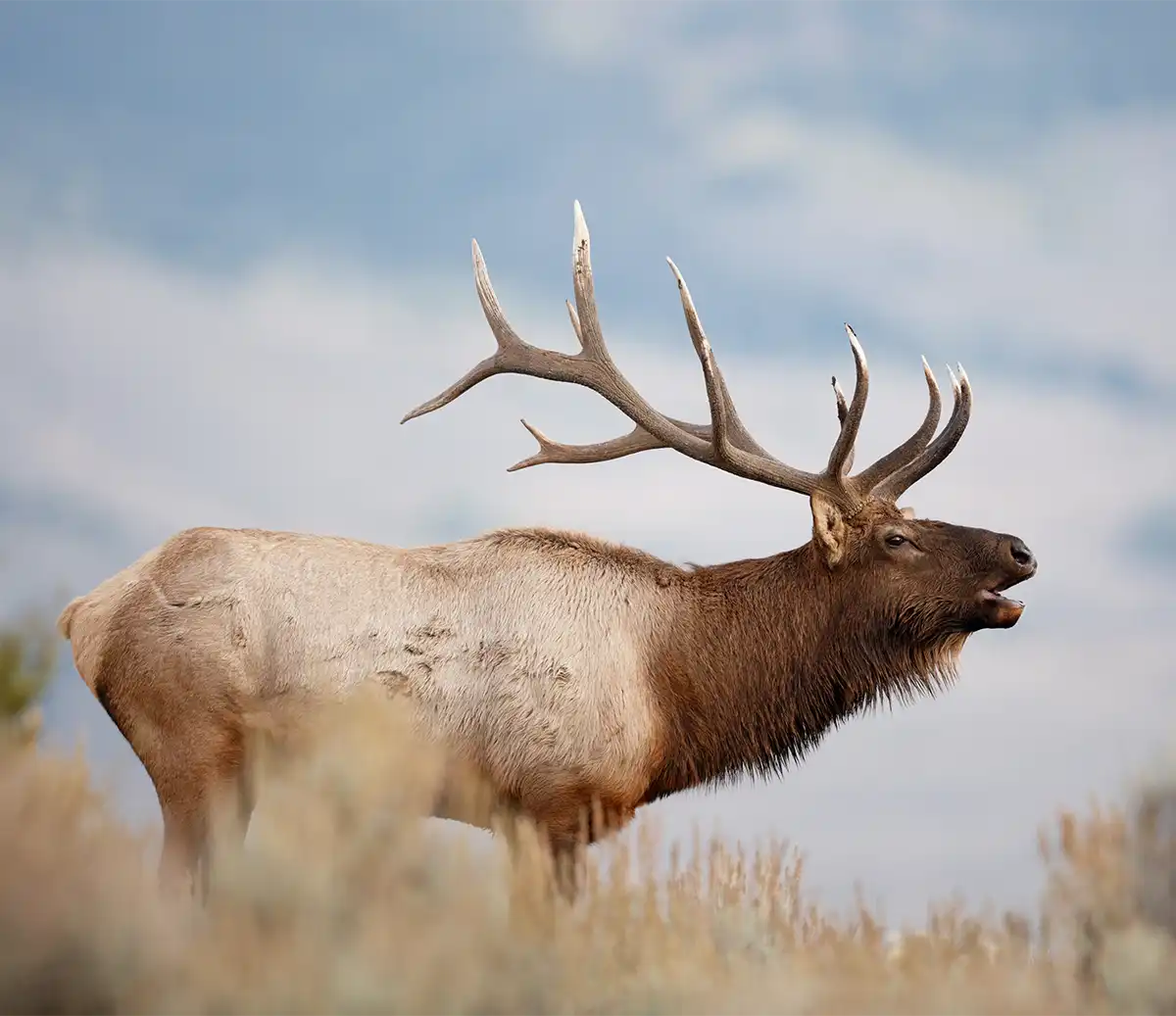Henry’s Fork Lodge’s official season runs Memorial Day weekend through October. Anytime in that window is a great time to access amazing dry fly fishing, it just depends on what you are looking for in the type of water or what hatch you want to target.
A general guide to the season:
The legendary Henry’s Fork runs clear all season, and offers excellent dry fly fishing from right behind the lodge.
Memorial Day through July 15 is prime time for the Henry’s Fork, Firehole and Madison in Yellowstone Park. It’s the season of famous hatches – green drake, brown drake, gray drake and salmon fly, and attracts the most anglers to the area.
Mid-July through mid-September is when the lower Madison, South Fork of the Snake, the Yellowstone, Lamar and Slough Creek in Yellowstone Park, and most of the area lakes come into prime time.
Mid-September through October is when all of the waters are at their peak, the crowds thin, the wildlife is out in force, and the temperatures cool.
June:
Late May into early June is a quiet time when the Henry’s Fork is already in its prime, but uncrowded. Thanks to its volcanic geology and spring sources, the Henry’s Fork doesn’t suffer the runoff and high, murky water of other rivers in the Rockies.
The salmon fly hatch progresses up the river from Ashton toward Box Canyon for several weeks, followed by a month of the golden stones, offering a great opportunity for very large fish on a dry fly.
The Harriman Park section of the Henry’s Fork opens June 15, but the rest of the river is open the entire month and the less visited lower river often provides outstanding dry fly fishing. Good caddis hatches attract large fish to the surface throughout the month.
In about the third week of June, the famous green drake hatch begins on the Harriman park waters, followed closely by the brown drakes. Early in June, the Madison may be impacted by runoff, but by the third week the salmon fly hatch begins its move up-river from Ennis to Quake Lake. The Firehole and Madison in Yellowstone Park are at their prime during this time, with good hatches of pale morning duns.
Most of the freestone streams will be impacted by runoff during at last part of June.
July:
The green drake hatch will be winding down, but the evening brown drake hatch will continue bringing big fish to the surface of the Henry’s Fork. Smaller mayflies such as the pale morning dun, and a smaller version of the green drake in the afternoons also sustain excellent dry fly activity in the Harriman Park section for most of the month. Box Canyon fishing, including dry fly, also remains good.
The salmon fly hatches on the Madison and South Fork of the Snake will continue up river during early July, and fish continue to take salmon fly imitations for a good week after the flies have stopped hatching. The caddis and mayfly hatches, along with terrestrials like hoppers, beetles, and ants, will sustain the fishing in the South Fork and Madison for the remainder of summer.
The Madison and Firehole in Yellowstone become too warm for good fishing after early July, but the Yellowstone, which opens July 15, Slough Creek and the Lamar are great alternatives for large, native cutthroats. Henry’s Lake hits its peak during the damselfly hatch of early July, and the famous gulper fishing on Hebgen Lake begins toward the end of the month.
August:
August is ant, beetle, and hopper season on the flatwater sections of the Henry’s Fork. Patient anglers will be rewarded with plentiful rising fish and thinning crowds. Box Canyon remains good, primarily on nymphs.
This is prime time for the lower Madison (Quake Lake to Ennis) with a variety of mayflies, caddis, grasshoppers, and other terrestrials providing good dry fly fishing. The Yellowstone and Lamar and Slough Creek in the park are also at their prime in August. Lake fishing, particularly for the “gulpers” of Hebgen Lake and on Island Park Reservoir also remains at its peak, with good hatches of still-water mayflies.
September:
Early September typically sees a continuation of August conditions. Around mid-month, weather conditions cool, with nighttime freezes not uncommon and less afternoon wind. Cooler weather signals renewed hatches and increased fish activity, so virtually all of the rivers become good this time of year. As most tourists return home, fall is the time for serious anglers and wildlife lovers. The aspens will be turning to gold, the bull elk will be bugling, and the waterfowl will be in full flight.
The Henry’s Fork offers good rise activity to a variety of small mayflies on the Harriman Park section and the big fish in Box Canyon will also become active. The upper river above Island Park Reservoir will see runs of big rainbows. The lower river, below Ashton, will come alive with rising fish. Spawning runs of big fish out of Hebgen Lake make the Madison in Yellowstone an ideal choice for streamer fishing. Fall mayfly activity and cooler water also re-energize the dry fly fishing on the Madison and Firehole in the park, and other Yellowstone streams also remain good. Snow flurries are always a possibility, but typically don’t interfere with fishing for more than a day.
October:
The weather grows steadily cooler and the chances of snow increase as the month progresses, but October is still a prime month for serious lovers of the outdoors. The scenery and wildlife are especially striking in the fall light. The excellent September fishing conditions continue through October, but with fewer anglers. Many local residents turn their attention to hunting, leaving the waters for anglers to fish in solitude.
October is an ideal time to use a streamer or big nymph to catch a trophy fish from the Henry’s Fork or South Fork of the Snake, or a really big Brookie from Henry’s Lake. Dry fly fishing continues to be good to hatches of small mayflies. We typically see a period of returning summer temperatures back up in the 70s during early October, but the weather is predictably cold by the end of the month.
